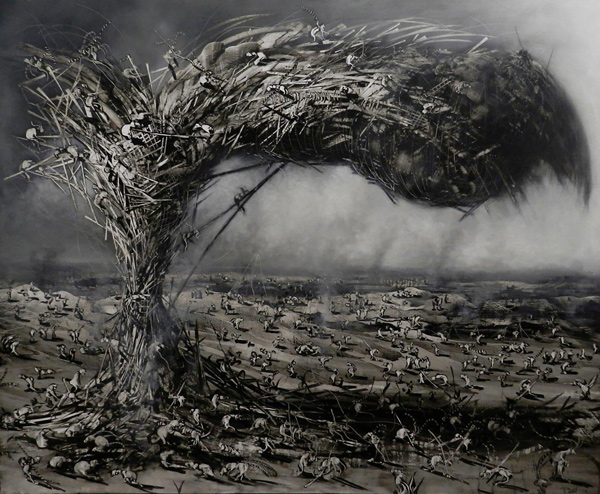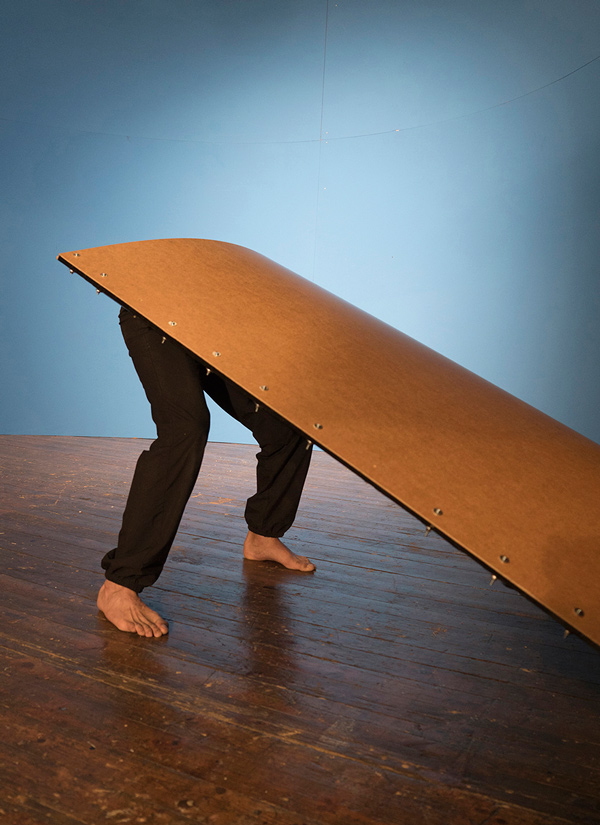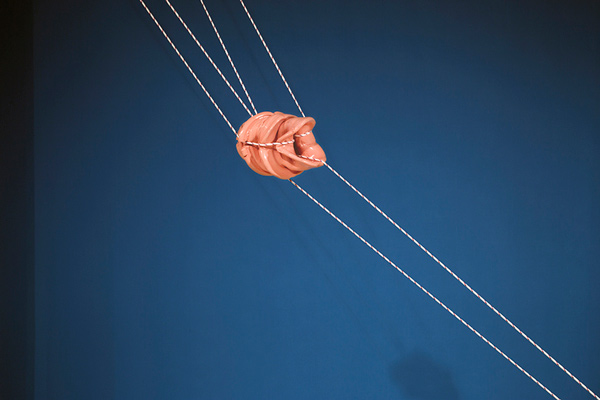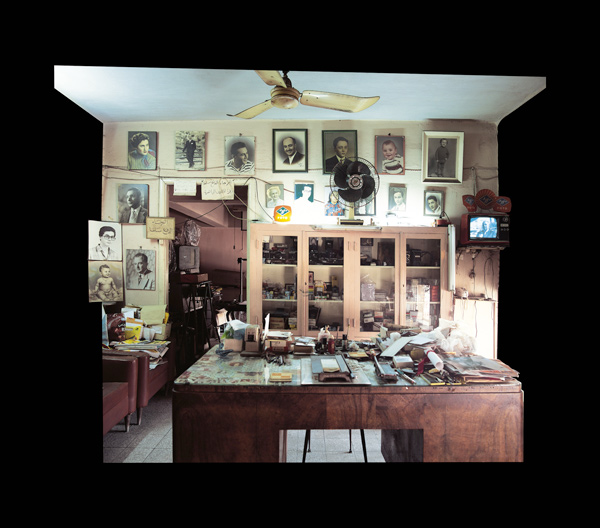I landed in Barcelona a little sweaty, slightly hung over, and very much lost. Much to my surprise, the discount tickets I purchased for $350 round-trip included three meals, unlimited snacks, and all-you-can-drink beverages (including alcohol). By the end of the 13-hour flight from LAX, I had the sneaking suspicion that Delta’s flight attendants were trying to fatten us all up for a cult ritual after landing.
I was recently visiting Spain partly because the tickets were so cheap, but mostly to explore the culturally rich region where some of my all-time favorite painters—Goya, Velázquez, El Greco—hailed from. Spain is much more vast, both culturally and geographically, than I had first assumed. With over 50 provinces, several tongues and 10,000 miles of train lines (fun fact), it can be difficult to tackle the art scene of an entire country. Thus, Barcelona.

In Barrio Gotico_photo by Leanna Robinson
Barcelona practically breathes art. With the Picasso museum, the Miró museum, the National Museum of Catalunya—to name a few—and Gaudi’s psychedelic architecture around every turn, one can easily get wrapped up in viewing the foundations of art history without exploring what the city currently has to offer. It’s also, frankly, difficult to discover “underground” galleries and events when one is a tourist. Does one, embarrassingly and with shame, type “hip spots in Barcelona” into Google? Luckily, I was graced with friends of friends who pointed me in the direction of galleries and alternative spaces that seemed up my alley.
My greatest piece of advice for anyone visiting Barcelona who is interested in exploring contemporary art galleries is to not travel on or near a holiday. I happened to arrive near Easter—one of the most celebrated holidays in Spain—and the timing for getting in contact with galleries was less than ideal.
After compiling a list of places to visit, I set out with my travel partner to check out the galleries, and one after the other, they were closed despite their listed hours. Look, I get it. Spain is a conservative, Catholic country, and people take their Christian holidays seriously. Still, galleries closing three days before Easter without any listed notice seemed a bit odd to my naïve American sensibilities. After waiting out the passage of Easter, and the traditional all-day processions in the street that followed, I was able to actually view some art.

Andrzej Farfulowski, Sabrina, 2014
In the Gothic Quarter (Barri Gòtic) lies Artevistas Gallery. Only a few steps away from the Picasso museum, this gallery is hidden off one of the narrow, winding streets characteristic of the neighborhood. Part art shop, part gallery, Artevistas exemplifies the street-art style still thriving in Barcelona. While a bit passé, the gallery should be on any visitor’s radar as its collection holds work emblematic of the genre; it seems to be a cornerstone of gallery-work street art in the city.
I found the gallery to be youthful and vibrant, and best of all, the famous tapas bar El Xampanyet is only steps away. I also wandered into the eclectic dive bar Sor Rita, which I would advise any art freak to frequent for ambiance and a cheap caña (draft beer). To be avoided in the area is the European Museum of Modern Art—a misnamed “museum” of figurative art, which I, a figurative painter and undercover admirer of figurative work, found to be embarrassingly bad. Unless you are a fan of photorealistic renderings of poorly composed photographs, MEAM is not for you.
In search of more “highbrow” work, I found myself in the Eixample neighborhood, not too far from the quickly-gentrifying, previously rough-and-tumble area of El Ravel. The strip near Carrer d’Aribau and Carrer de València is becoming something akin to Los Angeles’ Culver City, with trendy galleries moving into the newly gay (the neighborhood is sometimes referred to as “Gaixample”) party scene.

3Punts, Pabellon de rezos, 2016
Most notable in this neighborhood are Víctor Lope Arte Contemporáneo, 3 Punts Galeria and Galeria Joan Prats.
When I visited Joan Prats, they were showing Madrid-based Teresa Solar Abboud’s “Ground Control,” a solo show of ceramic sculptures, videos and photographs that I found exciting, with its somewhat disturbing renderings of human forms interacting with industrial objects. 3 Punts, a gallery spanning both in Barcelona and Berlin, was displaying the work of Spanish artist José Benítez, a mixed-media artist whose solo show “Exodus” I could easily see being shown at forward-thinking contemporary galleries like Night Gallery in LA. Meanwhile, at Víctor Lope they were showing Ana Riaño’s “RRSS” (Social Networks). This collection of work was most exciting and terribly relevant, as it showed acrylic renderings of past artists as if they lived in our social media-ridden world. Ingres (2017) shows a Facebook profile of Dominique Ingres with Grand Odalisque as his cover photo, and presses the question: What would it be like if these artists lived in our time?

Teresa Solar Abboud, Untitled, 2017, detail photography from her “Ground Control” solo show at Galeria Joan Prats in Barcelona

Joan Prats Gallery: Crushed by pressure, over the ceramic- Texas sky, 2017 (detail)
Other notable off-the-beaten-path galleries include Galeria Senda, Hans & Fritz Contemporary and alternative space Untitled BCN. I was also lucky enough to wander into independent film space Crater Lab, which was hosting “Dones que donen… la llum…a l’ombra” (“Women who give birth …the light…the shadow”), a showcase of experimental artist and poet Rrose Present and a series of shorts she curated.

Victor Lope: Ana Riaño, Ingres, 2017
Admittedly, my favorite stop in Barcelona wasn’t terribly underground at all, but still, it wasn’t terribly obvious either. The oft-overlooked Museu d’Art Contemporani de Barcelona (MACBA) hosted an impressive permanent collection along with a thought-provoking exhibit by Akram Zaatari titled “Against Photography, an Annotated History of the Arab Image Foundation.” The huge collection displayed the archives of the Arab Image Foundation in Beirut, Lebanon and addressed radical questions about photography, images and documentation itself. The permanent collection was certainly worth devoting an entire day to. I accidentally wandered across the courtyard into Centre de Cultura Contemporània de Barcelona, where I explored their mostly empty exhibition space, and eventually stumbled downstairs to a poetry slam competition.

Akram Zaatari, Objects of Study / Studio Shehrazade—Reception Space, 2006
MACBA was, without a doubt, my favorite stop in Barcelona, not only because of what the museum housed, but also because of the atmosphere outside. The exterior serves as an impromptu skate park for El Ravel, and hundreds of pros along with amateurs can be seen grinding the rails of the museum during the weekend. Given the prevalence of cafes near the museum, there’s nothing more pleasurable than sipping a sangria and eating a meringue as large as a watermelon while watching the locals express themselves outside of Barcelona’s greatest art house.


